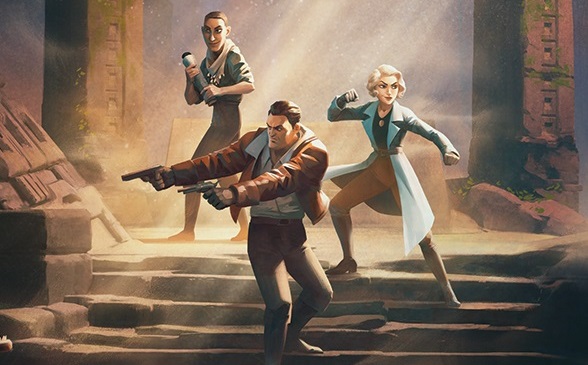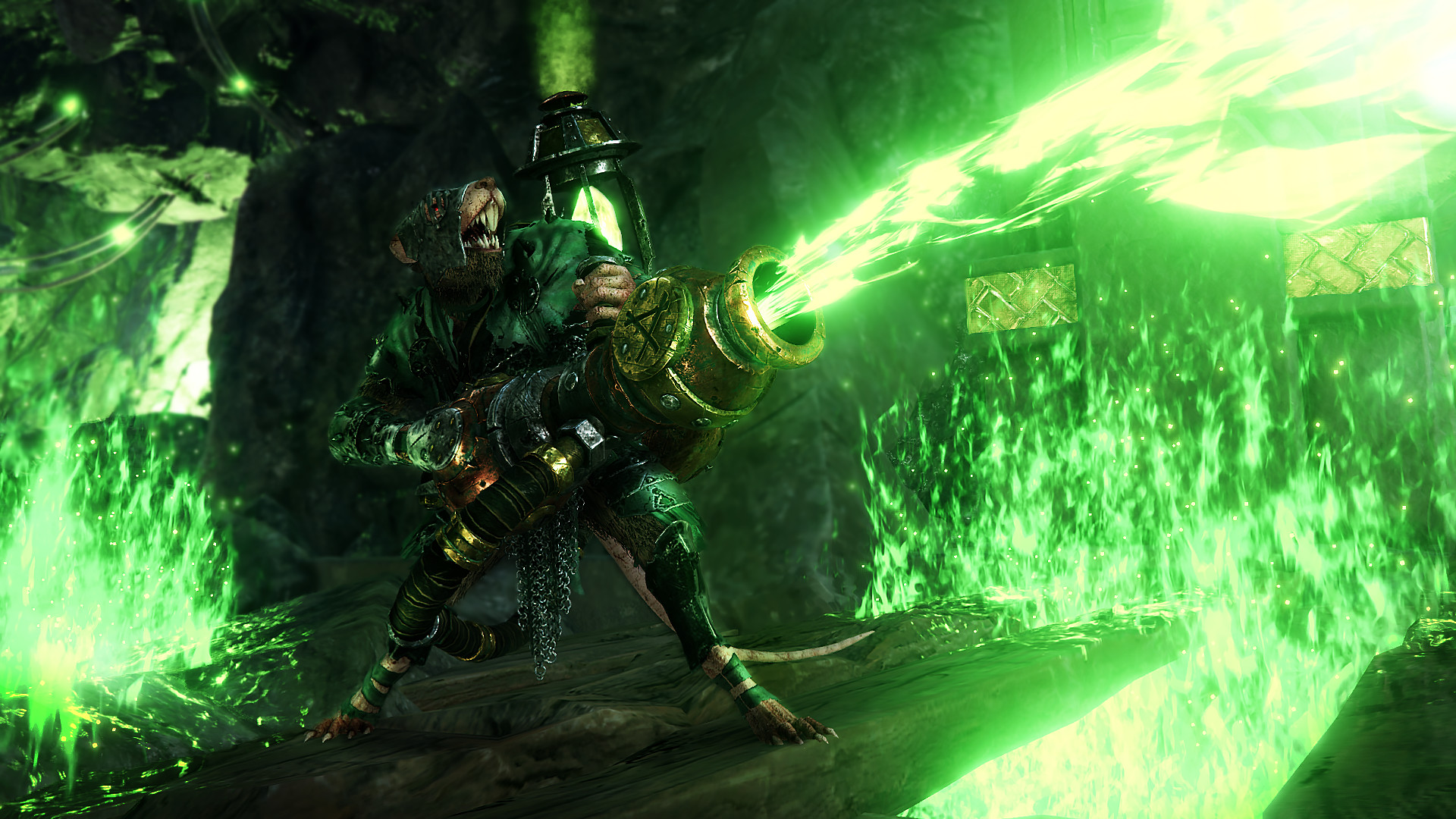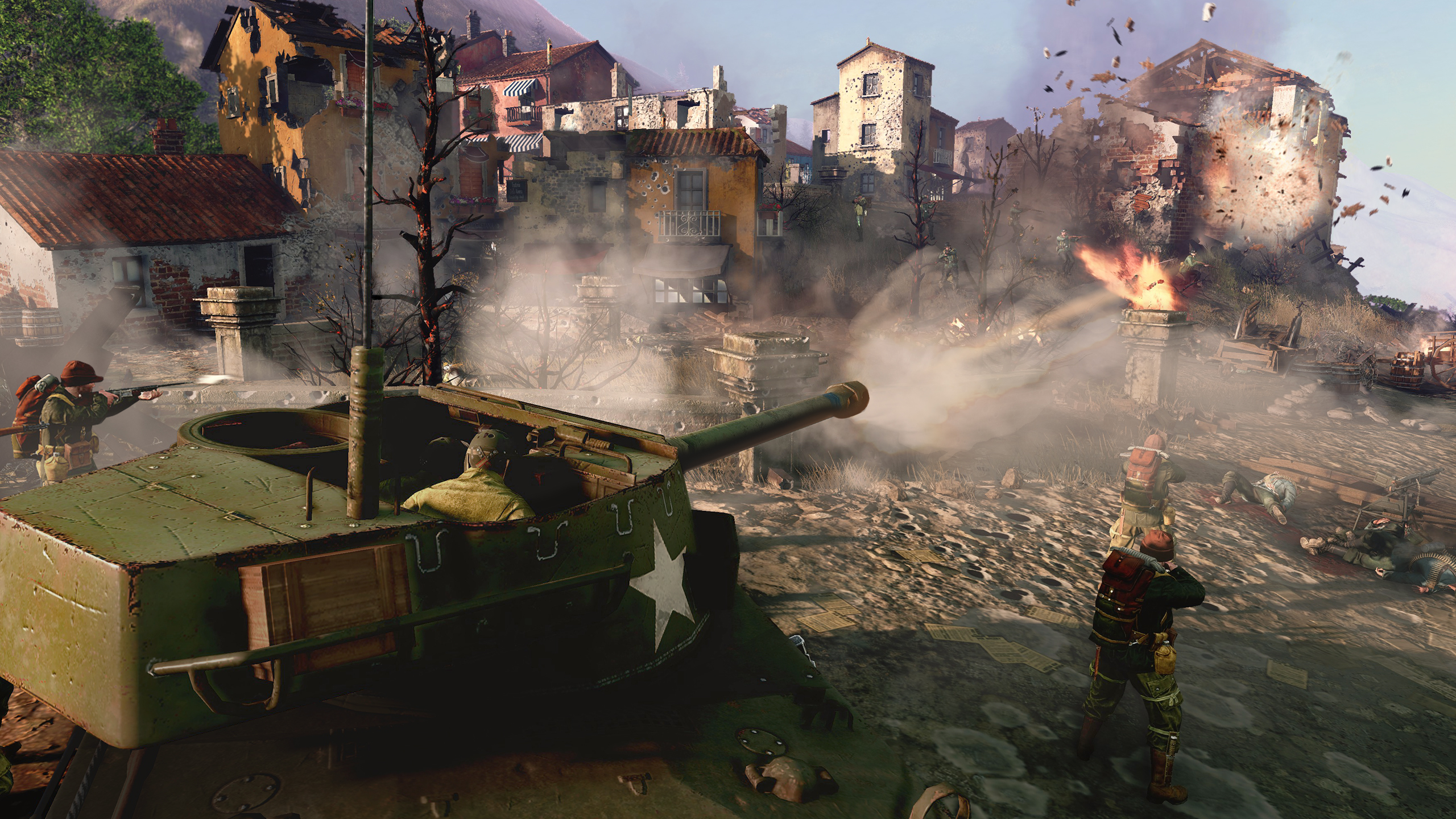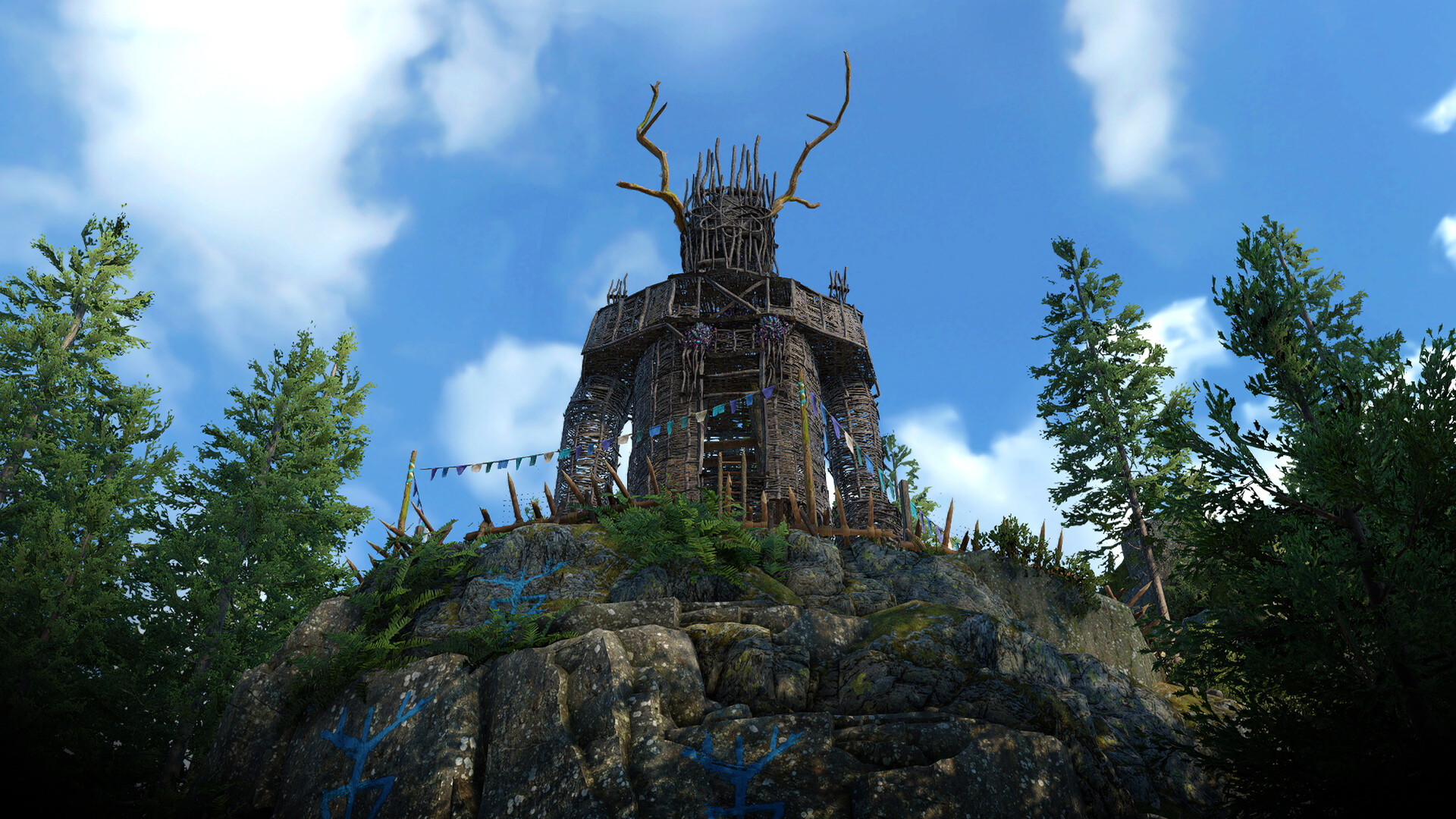What is it? A grid tactics game set in a magic-infused 1930s that switches between real-time stealth and turn-based battles.
Release date October 3, 2023
Expect to pay £42 / $50
Developer Harebrained Schemes
Publisher Paradox Interactive
Reviewed on RTX 2070, i7-10750H, 16GB RAM
Steam Deck Verified
Link Official site
There are two types of people in this world, and you probably know which one you are. Real-time or turn-based—how do you like your tactics? Generations of gamers have placed themselves either side of this divide, as generations of games have served up one or the other. The Lamplighters League, though, hasn’t quite made up its mind, or hopes it can bring us all together with its fusion of styles.
Out in the field in this alternate 1930s adventure, you switch rhythms between the sneaky real-time techniques of Commandos or Shadow Tactics, and the turn-based percentage play of XCOM. It’s a mashup we’ve seen previously in the work of developer The Bearded Ladies, such as Mutant Year Zero, and Lamplighters is as much indebted to that format as it is the disparate approaches of the aforementioned. It boils down to: the more guards you can remove silently in a mission, the less there are to worry about when things inevitably get loud.
Missions begin in stealth mode, with the trio (occasionally quartet) of combatants under your guidance using three class-based skills to knock out enemies on the sly. Sneaks can tip-toe up behind unsuspecting foes and bop them on the head; Bruisers charge in a straight line, potentially smashing multiple enemies at once; and Saboteurs lob an electricity trap that attracts a patrolling soldier (shock tactics, if you will). Get caught in enemy vision cones while executing such antics and turn-based play begins, or you can trigger it yourself whenever you’re ready to stop beating about the bush.
Naturally, thinning the herd of hostiles in advance is a worthwhile endeavour, not least because it makes missions quicker. Yet unlike in Mutant Year Zero, it feels like more of an optional undertaking here, a shortcut rather than a necessity in order to stand a chance in open combat. In many cases, it’s perfectly possible to face up full squads of goons as long as you pick your spot, perhaps waiting for enemy patrols to spread out a little so you can work them over in smaller groups.
As for the characters, while they all slot into those three stealth classes, in a stand up fight they become more distinctive. No two are alike, in fact, with their own weapons, special moves and passive bonuses to play with. Take Ingrid and Lateef, for instance, the first pair you meet. The former thuggishly beats foes into submission with weighted gloves, while the latter is a slippery thief, whose pistol packs a more figurative punch.
(Image credit: Harebrained Schemes)
Locations range from the kind of disused docks or seedy side streets that any decent noir detective would have to investigate, to secret bases in ancient ruins or jungles where you wouldn’t be surprised to bump into Indiana Jones.
With these and other characters Lamplighters shines brightly. Rather than generic military types, they’re all criminals themselves, scratching a living from dodgy deals until a mysterious figure known as Locke offers the kind of cash they can’t refuse to fight for his cause. Locke, it turns out, is the last surviving member of the titular organisation, sworn to stop a trio of shadowy evil folk from reaching some magic tower and taking over the world. Short of options, he’s taken to hiring talented ne’er-do-wells to sabotage enemy operations.
This adventure serial vibe fits the premise snugly. Developer Harebrained Schemes plays smartly on some cliches—Ingrid may look like a typical femme fatale, but the only killing she does is with her fists—while holding onto others that can still be of service. Locations range from the kind of disused docks or seedy side streets that any decent noir detective would have to investigate, to secret bases in ancient ruins or jungles where you wouldn’t be surprised to bump into Indiana Jones. There’s ripe 30s flavour in the villains, too, or ‘Scions’ as they’re known—a Lovecraftian occultist, a wealthy American industrialist, and an Aryan supremacist.
The real joy of the setup, though, remains in gathering your bunch of misfits and turning them into a crack fighting team. Once you’ve got your first three agents—Eddie, a sharpshooting war veteran, joins the initial pair—recruitment missions occasionally pop up where you make contact with a fellow outcast, who then either joins the roster of field agents or helps back at your island hideout with supplies and upgrades. It’s there, between missions, that little dialogues play out, adding to the camaraderie of the crew while showcasing their backgrounds and motivations.
Run and gun
(Image credit: Harebrained Schemes)
There’s plenty besides to mull over, as Lamplighters adopts the two actions per turn system of XCOM, but rarely boils down to simple move and fire routines.
The turn-based combat serves to cement these relationships further, as each individual relies on their comrades’ skills to survive. Your chief consideration here is how to balance your long and short range game, since some characters are heavily melee oriented and others dedicated to firearms. For once, bringing a knife to a gun fight isn’t necessarily a mistake, especially to get at enemies in cover. As long as you’ve got back up, that is, to provide overwatch and snipe off additional threats.
There’s plenty besides to mull over, as Lamplighters adopts the two actions per turn system of XCOM, but rarely boils down to simple move and fire routines. It often feels unrestricted, beginning with the concession that an attack doesn’t automatically end your turn, and offers means for characters to extend their turns or bank reactions before the enemy strikes back. Ingrid gets a do over if she kills an enemy with her basic punch, for example, while the bullet hungry Eddie can earn auto-reloads, and Lateef gains an evade bonus on moving that guarantees he’ll dodge an attack in the opposition turn.
From there, skill upgrades enable synergies that can stack passive boons if used correctly, and once you add in a handful of status effects—mystical assassin Celestine can accelerate enemies’ stress, forcing them to turn on their heels or on each other—there’s almost something of the deck building game about Lamplighters’ systems. Indeed, there is literal deck building of a kind, as each character can also equip up to three magical cards awarded after battle that bestow additional tricks and boosts.
Stoppage time
(Image credit: Harebrained Schemes)
This dearth of variation is doubly trying because you have to complete a lot of missions to finish Lamplighters, often returning to locations you’ve already seen.
As strange as it may seem to say it after all that, however, Lamplighters does have a major issue with repetition. For starters, the missions lack the personality of the characters—they’re needlessly long and too alike in layouts and objectives. Whether you’re out to contact a new recruit, shut down some nefarious machine, or steal a magical relic, you follow the same cycles, working your way to a designated point on the map and picking off whoever stands in the way. Generally there’s an optional side objective too, but it’s merely a detour before returning to the main task.
This dearth of variation is doubly trying because you have to complete a lot of missions to finish Lamplighters, often returning to locations you’ve already seen. The game’s structure roughly follows that of XCOM 2, with a world map offering a choice of missions that slow down one of three doomsday clocks tied to the Scions. In effect, you can’t merely complete critical missions—of which there are 20 or so, including recruitment sorties—but have to keep delaying them for water-treading tasks purely to stop the clocks advancing. It lacks the hook of XCOM 2’s campaign, where every mission feels crucial.
True, your characters gradually level up after these time-consuming diversions, but then even though that helps combat to evolve, the stealth side of the equation remains curiously static. You always need to plan a little, deciding when to send an agent off alone to scope out an area and when to bunch your team together, but other than facing increasing numbers of enemies, it’s the same question from first to last. Each class has one takedown skill and one navigation skill (climbing, lockpicking, breaking walls), but the map design never grows in complexity to make you ponder how best to use them.
Leagues Apart
(Image credit: Harebrained Schemes)
Enemy soldiers will inexplicably turn down chances to shoot and jog away from the fight or straight into patches of fire.
There isn’t much verticality in the game’s locations either, which makes both stealth and combat rather two-dimensional, cover objects aside. Nor is there much destructible scenery, allowing you to, say, expose opponents with a well-placed grenade when they’re bedded in. With such omissions, Lamplighters feels like a kind of XCOM-lite—an impression that only grows with unsophisticated AI that might tactfully be described as generous to a fault. Enemy soldiers will inexplicably turn down chances to shoot and jog away from the fight or straight into patches of fire. Even when one of the Scions visits the battlefield, it’s surprisingly easy to isolate then overwhelm them before they get a chance to show off their skills. Forgiving it may be, but where’s the gratification in overcoming idiots?
Some of these limitations are likely technical, given that Lamplighters already struggles to maintain a decent frame rate. It’s a somewhat glitchy experience overall, in fact, with a camera that fails to take account of scenery blocking its view when zooming in on attacks, and some muddy logic that can’t but rub you up the wrong way, not least in the transitions between real-time and turn-based modes. Kill the final enemy in a battle and it ends abruptly, with characters standing near fire or unexploded grenades likely to take damage before you resume control.
That’s a shame because Lamplighters mostly manages its turn-based and real-time dichotomy quite neatly. Its problems aren’t in the core concept, but in placing breadth over depth, content over refinement, which leaves both turn-based and real-time elements lacking the staying power of their more dedicated inspirations. In trying to offer something for everyone, The Lamplighters League might not fully satisfy anyone at all.










